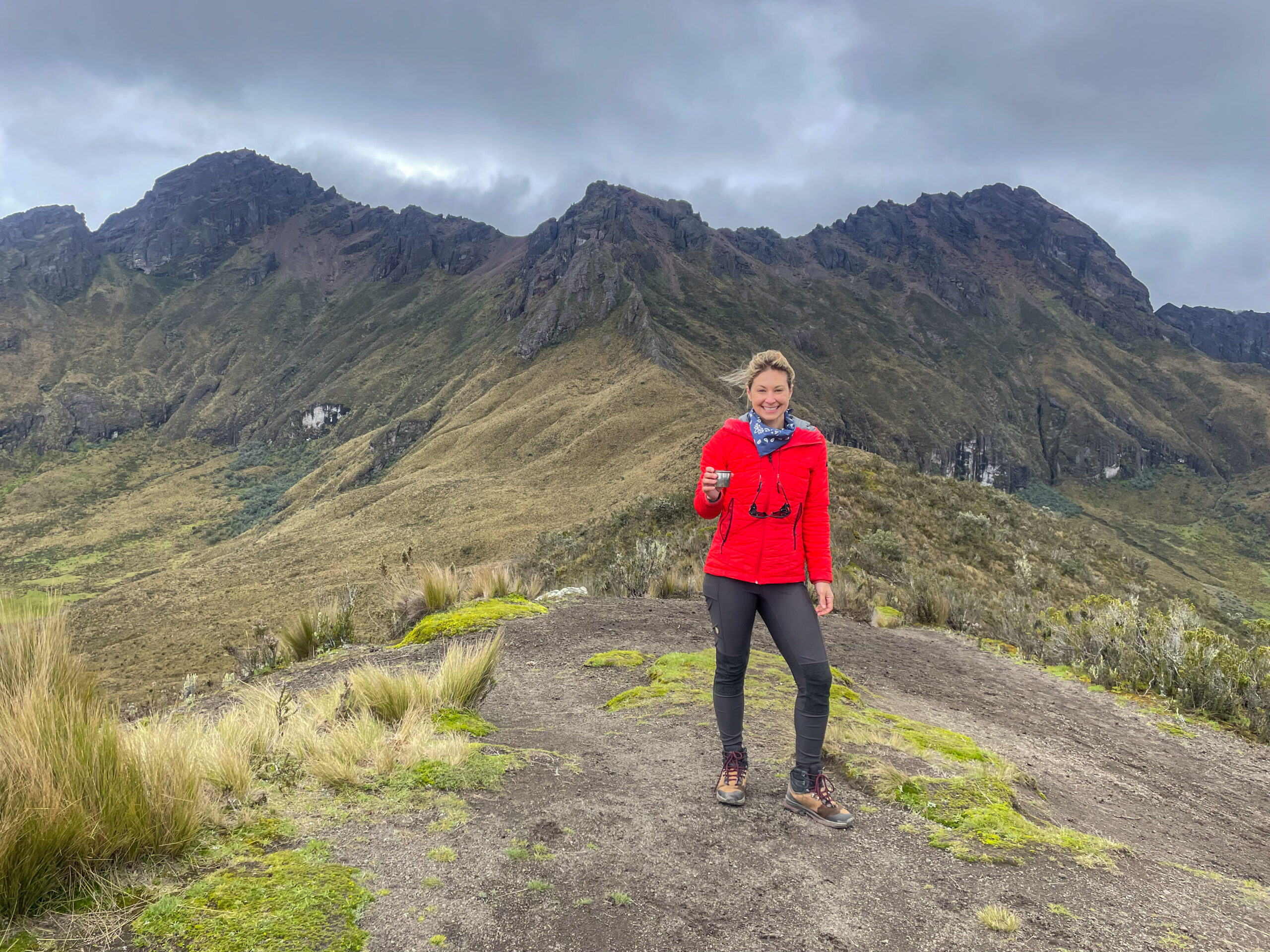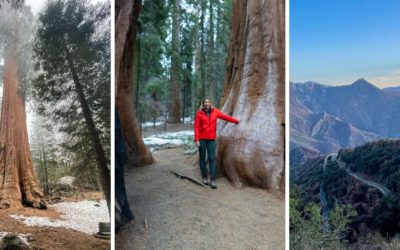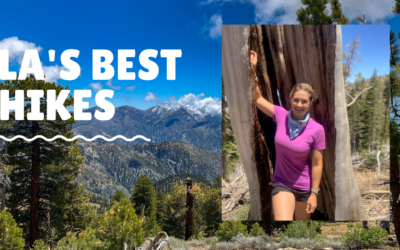Towering above the high plains of Ecuador sits one of the world’s tallest active volcanoes: the Cotopaxi volcano. Known for its stunning beauty and breathtaking views, this snow-capped giant is revered by locals and foreigners alike. While hikers travel from across the globe to summit its picturesque peak, the local Quechuan people view it as a sacred site and home to their traditional deities.
Named for its crescent-shaped crater, the Cotopaxi volcano truly is a destination unlike any other. In February of 2022, I traveled to Ecuador on a month-long solo trip, where I explored much of the country, including the mountainous areas of the Andes. On this trip, I spent eight days in Cotopaxi National Park, excited to finally hike and ascend the beautiful Cotopaxi volcano. I’m sharing everything you need to know to do if you plan on hiking and reaching the summit yourself.
This post may contain affiliate links that help me earn a commission at no cost to you when you click and make a purchase. All opinions are my own and I would never endorse anything I wouldn’t use myself. When you click, you help keep this blog up and running—thanks for your support!
-
- 👉 Find the perfect hotel
- 🚗 Rent a Car
- 🥾 Find a nearby Trail
- 🧳 Pack the perfect suitcase with these packing cubes
- 👉 All the gear you need for your adventure
- 📱Grab an E-Sim for travel abroad
What Is the Cotopaxi Volcano?
Situated about 50 kilometers (about 31 miles) south of Quito, Ecuador’s capital city, the Cotopaxi volcano is an active stratovolcano that lies along the Ecuadorian Andes within the Cotopaxi National Park. Set at an impressive altitude of 5,897 meters, this volcano is the second-highest point in Ecuador.
It also happens to be home to one of the few equatorial glaciers in the world. This is part of what makes Cotopaxi a unique destination, but also one that requires advanced planning and preparation. In addition to acclimatization training, which I highly recommend, hikers are also required by law to hire local guides for safety reasons.
Between Cotopaxi’s active volcanic status and its ever-changing glacial environment, hiking to the summit (which takes at minimum two days) can be very dangerous if done improperly.

Preparing to Hike the Cotopaxi Volcano
Given Cotopaxi’s high elevation, it’s essential that you take time to train your body and acclimate to the altitude before attempting the climb. Doing so will not only help to fend off altitude sickness—it will also help to ensure that you’re physically fit for the volcano’s demanding terrain.
One of the best ways to prepare your body for this is to partake in smaller hikes that mimic the conditions you will see on Cotopaxi, but at lower elevations. Keep in mind that these acclimatization hikes are also a requirment for guiding companies. Hiking Cotopaxi will not be allowed without at least two acclimatization hikes on days prior.
While there are several volcanic mountains you can hike in the surrounding area, here are a few that I wholeheartedly recommend:
- Ruminhai Volcano: Also located in Cotopaxi National Park, this extinct volcano offers three peaks, ranging in elevation from 4,712 to 4,631 meters. The best way to hike this is with a local guide.
- Illiniza Norte: This volcanic mountain, which is situated within the Ecological Reserve of the Ilinizas, reaches a peak elevation of 5,248 meters. A local guide is highly recommended, as this hike has steep sections where ropes may be required.
- Pasochoa Volcano: Standing at an elevation of 4,200 meters, this extinct volcano lies only an hour outside Quito and offers stunning panoramic views from the summit.
- Corazon Volcano: Also located within the Illinizas Ecological Reserve, this extinct volcano stands at an elevation of 4,790 meters for a rewarding but challenging hike to the summit.
- Rucu Pichincha Volcano: This active volcano is situated just outside Quito and sits at an elevation of 4,784 meters. Its summit can be reached via the Teleferico or cable car, followed by a 6-mile hike.
Tips for Acclimatizing
In addition to training hikes, there are a variety of other precautions that you can take to acclimatize yourself and prevent altitude sickness:
- Avoiding alcohol while you prep and train
- Staying hydrated in the days leading up to the hike
- Remaining well-rested during and in the days leading up to your trek
Alongside this, you’ll want to spend at minimum four to six weeks training for your climb. You can do this by partaking in smaller hikes near your home, going for runs, and even walking. The important part here is to keep your body moving. You can download my 12 week training guide here or check out my training guide for hikers and backpackers.
It’s also worth noting that there are several medicines available that can prevent and alleviate altitude sickness. If you plan to bring these with you, it’s best to consult your doctor ahead of time.
Gear You’ll Need to Hike the Cotopaxi Volcano
While many local guides will provide you with mountaineering equipment needed for climbing Cotopaxi, it’s always best to check with them to confirm what you’ll need. Generally speaking, companies will include items such as crampons, helmets, harnesses, and ice axes in their excursion fees. Some companies may offer this gear on a rental basis.
In addition, you’ll want to be sure to pack a variety of insulated, lightweight, waterproof clothing. This includes base layers, protective jackets, trekking pants, dry-fit T-shirts, warm pullovers, gloves, hats, scarves, high socks, and trekking boots. You can find my top-rated gear recommendations here in my gear locker.
To protect against the sun, bring sunglasses, sunscreen, and a sun hat. Finally, you’ll want to bring along a small backpack, knife, and whistle for safety purposes. If you don’t have mountaineering boots, you can rent them at a local mountaineering shop in Quito, like Condor Trek (this is where I rented gear for the several days in the mountains).
Here’s a quick gear checklist to reference for the Cotopaxi volcano:
- Base layers
- Protective jackets
- Trekking pants
- Dry-fit T-shirts
- Warm pullovers
- Gloves, hats, scarves
- High socks
- Trekking boots
- Crampons
- Helmets
- Harnesses
- Ice axes
- Sunscreen
- Sunglasses
- Sun hat
- Small backpack
- Whistle
- Knife
Finding the Right Guide Company
There are a variety of guide companies in the area that offer trekking excursions to the Cotopaxi volcano. Generally speaking, they’re all pretty comparable in price; however, they do offer different excursion lengths and add-ons.
In addition to this, some companies provide group tours, while others offer private solo excursions. I personally went with Cumbre Tours, which is based out of Quito and is a certified sustainable tour operator. I had a great experience with them and would recommend them to anyone interested in climbing Cotopaxi. I also climbed Chimborazo with them a few days later and had the same guide for both climbs.

Climbing Cotopaxi: What to Expect
Day 1: Jose Rivas Refuge Basecamp
Most tours up to the summit of Cotopaxi begin with a relatively easy first day. Typically, you’ll start in the afternoon and hike for about an hour up volcanic slopes until you reach the Jose Rivas Refuge. This basecamp, which is located at an elevation of 4,800 meters, is home to a restaurant and approximately 75 beds.
While you’ll be staying the night here, some hikers prefer to simply climb up to the restaurant, take in the views, and then head back down. This is a good option for those who may be new to trekking or those who haven’t had as much time to prepare for the altitude and just want to see the volcano. You may want to check out the Cotopaxi Volcano and Colonial Hacienda Day Trip from Quito.
Overnight guests at the refuge will be served dinner, assigned a bunk, and privided with refuge Crocs to wear inside. Beds are dormitory-style in two large rooms. Everyone is required to bring their own sleeping bag, and an extra blanket and pillow is provided. If you have never experienced sleeping at high altitudes, be prepared for many people passing gas in the night (seriously!). The lower levels of oxygen in the air often make people’s stomachs upset. Ear plugs and an eye mask are great to have if you are a light sleeper.
Bed time is typically around 7:30PM, as most hikers will head for the summit between midnight and 1AM.
Day 2: Hike to the Summit Overnight and Descend
Wake-up times vary depending on your experience and how fast your guide thinks you will hike. The refuge will have coffee and tea out for all the night owls, as well as bread and various jams for a midnight snack.
Beginning the second day of the trek in the middle of the night seems strange, but the goal here is to reach the summit by sunrise. This ensures you can start your descent before the sun triggers unstable conditions along the glacier. As you trek up to the summit, you’ll hike across volcanic rock, glacial crevasses, snow bridges, and snow-covered slopes.
In total, it’ll take about 6-7 hours to reach the top of the Cotopaxi volcano, where you’ll be greeted with incredible views of the volcano’s crater and the surrounding Andes. After taking in the stunning vistas, you’ll begin your 3-4 descent back down the volcano. Once back at the refuge you can have breakfast, grab your sleeping bag, and head back to the awaiting transportation at the bottom of the mountain.

What If I Can’t Summit Cotopaxi?
It’s important to note that Cotopaxi is known for its frequent volcanic eruptions and avalanches. In fact, as of February 2023, the volcano was actively spewing daily emissions of gas, steam, and ash. This is why it is so important to hike with a guide and follow their directions very closely.
Local guide companies are trained, know how to navigate the terrain safely, and know how to respond when dangerous conditions arise. Listen to your guide and take their knowledge and advice without ego. Sometimes reaching the summit is too dangerous, and that’s just the way it is. It doesn’t matter how long you have traveled or how prepared you are—if it’s too dangerous because of weather, avalanches, or conditions, then turning back or staying put is the only option.
Where to Stay While Hiking Cotopaxi
Cotopaxi National Park is located a few hours south of Quito. The best places to stay prior to, during, and after your summit hike are in and around Cotopaxi National Park. There are several places I recommend in this area, and depending on the tour or guide service you book with, accomodations could also be included. Traditional haciendas are great places to stay. These are traditional Ecuadorian working farms and two of the best are on the outskirts of the park:
- Hacienda Los Mortinos has some of the best views of Cotopaxi from its dining room on a clear day. The property has llamas and alpacas, a campground, large rooms with soaking tubs and a restaurant serving all meals. They also have mountain guides that can take you on some of the acclimation hikes near the hotel.
- Hacienda El Porvenir is a working farm with onsite restaurant, horseback riding and stables, a spa with hot and cold pools, and a traditional Ecuadorian sauna. This property also offers numerous tours, cooking classes, and has a great firplace for warming up after your adventures.
In the park, the Hotel Tambopaxi is also a popular place for hikers and climbers prividing both shared dormitory style rooms, large family suites and single rooms with views of the park. The hotel and hostel also provides meals, and has on site horseback riding and guiding services.
Need more ideas on where to stay in Ecuador? Check out this list.
Visiting the Cotopaxi Volcano in Ecuador
Despite the inherent risks that come with climbing Cotopaxi, the hike here is an incredible experience and one that is sure to leave you in awe. From the breathtaking views of the volcano itself to the unforgettable vistas from its summit, Cotopaxi truly is a sight to behold! You’ll never regret giving it your all in an attempt to reach the summit.
Share this Article & Drop a Comment if you love to hike




















0 Comments